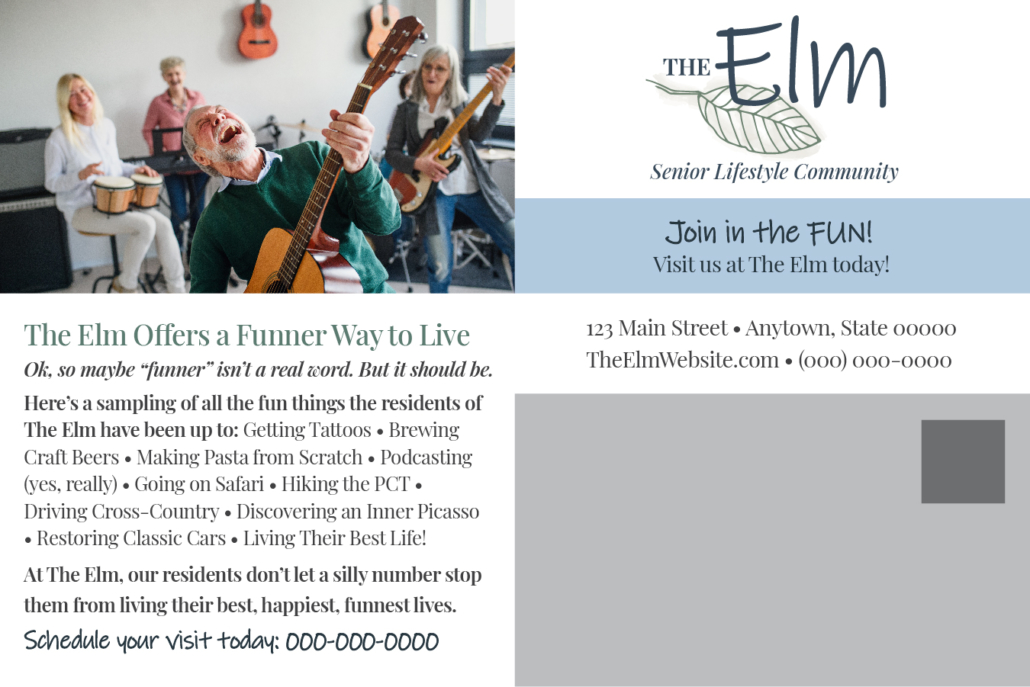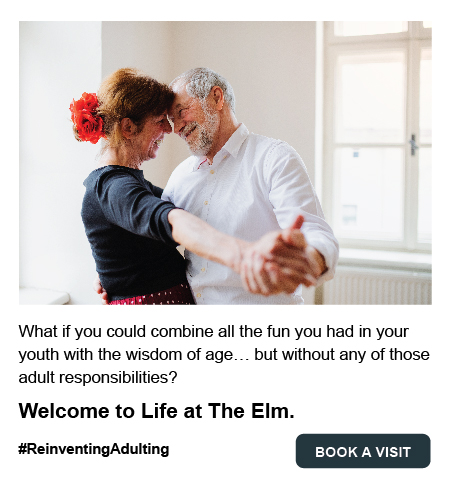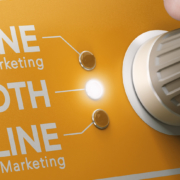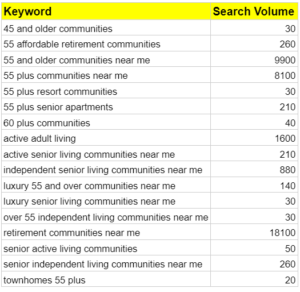Creative Marketing Ideas for Senior Living
One of the biggest challenges for communities is coming up with creative marketing ideas for senior living—ideas that the community’s marketing team can easily execute across multiple channels, like emails, social media, paid ads, and the website. (Read more about the importance of integrated marketing campaigns.)
If only there were a magic “creativity” button that you could hit and voila—you get a fun and effective campaign at your fingertips.
Guess what? We got you!
At Senior Living SMART, our team is constantly developing fresh messaging campaigns. We create all the various “pieces” for websites, social media, paid search, and so forth. You can choose a campaign and customize it from there.
We thought it would make sense to pull back the curtain and share some of these creative marketing ideas for senior living that our team has developed. So here’s our first post doing exactly that!
To kick it off, we’re going to discuss our “Retirement Rocks” campaign, including the rationale behind the messaging, the various components, and a quick peek at some of the creative elements. (Hey, we’re not going to give it all away.)
If you’re intrigued and would like to explore using this campaign for your community, get in touch! This can be a great way to experience what it’s like to work with the Senior Living SMART team.
Creative Marketing Ideas for Senior Living: Retirement ROCKS!
Messaging Rationale
Use this campaign to reframe senior living in the positive light it deserves—while starting to really focus on Boomer messaging. (Effectively marketing to Boomers is becoming more and more important.)
Boomers are going to turn the concept of senior living on its head. These folks expect cappuccino machines, sushi bars, trips to Italy, yoga classes, spas, and whatever else is trending. They love the idea of meeting new people, doing new things, and going to new places. The options below reinforce this approach to senior living and tackle anti-aging bias.
Our approach when developing the messaging in this campaign . . .
Many of these folks are moving into senior living communities by choice, not due to catastrophe (like an Alzheimer’s disease diagnosis or death of a spouse). It’s about pleasure—not pain—and living the lives they always imagined . . . and that they can now truly live now that they are retired and have more financial security. The sales cycle is LONGER (more than a year) and requires more touches (22-28). And your marketing needs to be fresh and creative at every touch point.
Boomers look at aging very differently than their parents or grandparents did. And Boomers do NOT want to be talked to the same way marketers talked to their grandmas.
Messaging needs to convey that . . .
- Getting older doesn’t have to suck. It’s actually better in so many important ways than it was at 20 or 30.
- 55+ communities and vibrant senior living communities won’t make you feel old. Just the opposite—they help you stay young by taking care of home maintenance so you can get the most out of your life.
- This is your time. You’ve earned it. You deserve it.
- You spent your whole life working for a living. Ready to play for a living?
- OK, so maybe regular “adulting” isn’t all it’s cracked up to be. But adulting at this senior living community is pretty darn fabulous . . .
- We’ve changed everything about what it means to grow older. And we think you’re going to like the upgrade.
- Life in our community offers all the super-fun aspects of life on a college campus without final exams, school loans, or looming responsibilities.
- What if you could combine all the fun you had in your youth with the wisdom of age, but without any of those adulting responsibilities? That’s the very definition of life in our senior living community.
Campaign Components
We’ve created all the various pieces—from website landing pages to social media posts to digital ads. We’ve outlined two premium offers that you (or we) can develop further. We’ve done the keyword research and brainstormed 20+ blog post titles. (Again, your team could write them, or we could—or we could do a combo approach.)
Our goal is to meet communities where they are with their marketing. Your team might be able to take everything in the campaign “bundle” and execute it. Or you might need us to do it.
You might also decide to do only a few items in the bundle—that works, too! These campaigns are super customizable—and can still integrate nicely, even if you remove certain pieces.
Below are ALL the items you get if you want the whole enchilada.
- Website landing page
- Multiple direct mailer concepts
- Advertising concepts (print + digital)
- Premium offers (two concepts for downloadable guides)
- Social media posts
- Keyword-rich blog topic brainstorm (over 20)
Creative Highlights
Here’s a peek at the creative for some of the items listed above. We used a fictional senior living community called “The Elm.” Everything is customizable. You can swap in your logo and the types of fun activities that happen in your community.
Direct mailer

Digital banner ads

Social media

Want to leverage our creative marketing ideas for senior living?
If you like what you see above, let’s chat! We can show you all the pieces in this campaign and customize them for your community. We’ll use only the components that make the most sense for your goals while making sure everything integrates seamlessly. GET IN TOUCH.













